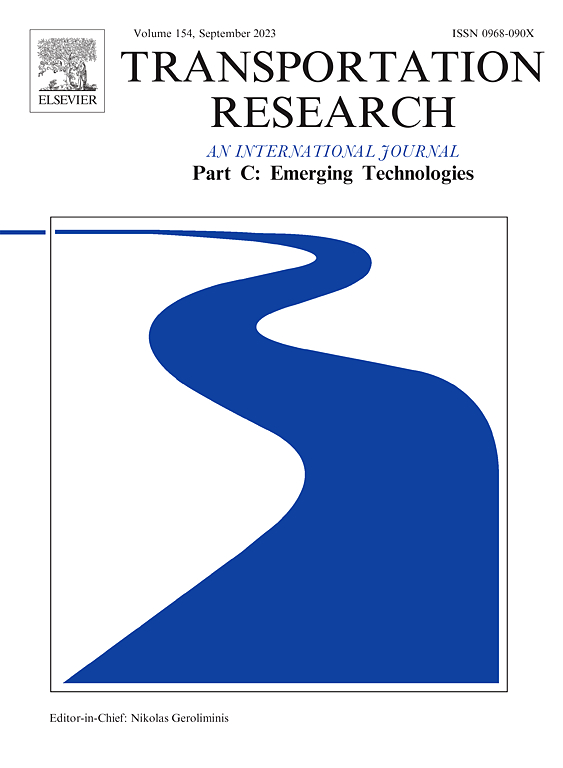Use of graph attention networks for traffic assignment in a large number of network scenarios
IF 7.6
1区 工程技术
Q1 TRANSPORTATION SCIENCE & TECHNOLOGY
Transportation Research Part C-Emerging Technologies
Pub Date : 2025-02-01
DOI:10.1016/j.trc.2025.104997
引用次数: 0
Abstract
The traffic assignment problem (TAP) has been a well-known research problem in transportation science for over five decades. Various solution algorithms, including link-based, path-based, and bush-based methods, have been developed to address this problem, with different structural complexities, memory requirements, and solution efficiency. In transportation planning practice, it is required to execute a traffic assignment algorithm hundreds or thousands of times to find the most efficient planning scenarios for a large metropolitan network, which may be very time-consuming, often taking several days and even a few weeks. In this study, we suggest a data-driven method to perform evaluating a large number of transportation planning scenarios in a quicker manner. Instead of relying on iterative network optimization-oriented or equilibrium-oriented algorithms, we introduce a graph attention network (GAT) within an encoder–decoder framework to learn and derive traffic assignment solutions. The model consists of an encoder module and a decoder module, where the encoder module utilizes a special attention mechanism to abstract complex spatial supply–demand features, and the decoder module transforms these features into network flow patterns. We also present two model variants based on different output objectives: one directly predicts link flows, while the other first predicts path flows and then converts them to link flows. To validate the proposed models with different structural configurations and parameter values, we conducted two rounds of experiments on a set of widely used benchmark networks with various topological structures and demand patterns. The results show that both models can predict link flow rates with a mean absolute percentage error ranging from 3.8% to 8.5% across different networks. Moreover, they require lower computing time compared to traditional convergence algorithms. As the network size increases, the computational efficiency advantage becomes more pronounced. This suggests that the proposed machine learning approach provides an efficient computing procedure for executing traffic assignment for a large number of transportation planning scenarios.
求助全文
约1分钟内获得全文
求助全文
来源期刊
CiteScore
15.80
自引率
12.00%
发文量
332
审稿时长
64 days
期刊介绍:
Transportation Research: Part C (TR_C) is dedicated to showcasing high-quality, scholarly research that delves into the development, applications, and implications of transportation systems and emerging technologies. Our focus lies not solely on individual technologies, but rather on their broader implications for the planning, design, operation, control, maintenance, and rehabilitation of transportation systems, services, and components. In essence, the intellectual core of the journal revolves around the transportation aspect rather than the technology itself. We actively encourage the integration of quantitative methods from diverse fields such as operations research, control systems, complex networks, computer science, and artificial intelligence. Join us in exploring the intersection of transportation systems and emerging technologies to drive innovation and progress in the field.

 求助内容:
求助内容: 应助结果提醒方式:
应助结果提醒方式:


